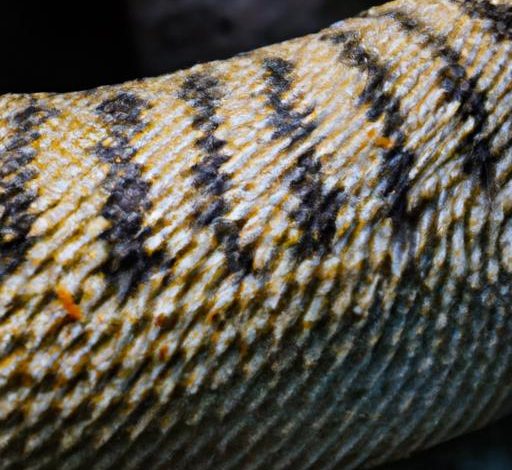Do Lizard Tails Have Bones?

Lizard tails have always fascinated us with their unique characteristics and remarkable abilities. These appendages play a crucial role in a lizard’s survival, serving various purposes such as balance, communication, and defense mechanisms. However, one question that often arises in our minds is whether lizard tails contain bones. Join me on this fascinating journey as we explore the anatomy of lizard tails and uncover the truth behind this intriguing question.
Lizard tails are incredibly complex structures, consisting of a combination of muscles, blood vessels, nerves, and connective tissues. They are designed to be flexible and agile, allowing lizards to maneuver through their surroundings with ease. While bones are essential for providing structural support in various parts of a lizard’s body, such as their spine and limbs, the presence of bones in their tails remains a subject of curiosity.
It’s time to dive deeper into the composition of lizard tails and understand what makes them truly remarkable. Are you ready to uncover the secrets hidden within these captivating appendages? Let’s proceed to the next section and unravel the mysteries of lizard tail anatomy.
Next section: Anatomy of Lizard Tails
Anatomy of Lizard Tails
Lizard tails are fascinating structures that exhibit a unique anatomy, allowing lizards to perform extraordinary feats. Let’s take a closer look at the composition and structure of these remarkable appendages.
Overview of Lizard Tail Structure
Lizard tails consist of several key components that work together harmoniously. At the core of the tail, you’ll find a series of muscles, which provide the tail with its incredible flexibility and agility. These muscles allow lizards to perform intricate movements, enabling them to navigate their environment effortlessly.
The Role of Blood Vessels and Nerves
Lizard tails are richly supplied with blood vessels, ensuring a steady flow of oxygen and nutrients to support their growth and function. Additionally, an intricate network of nerves runs through the tail, allowing lizards to have a keen sense of touch and proprioception. This enables them to respond swiftly to external stimuli and maintain their balance while on the move.
Understanding the fundamental structure and composition of lizard tails helps us appreciate their versatility and adaptability. But what about the presence of bones? Are bones a part of these incredible appendages? Let’s proceed to the next section and unravel the mystery behind the existence of bones in lizard tails.
Next section: Skeletal System in Lizards
Skeletal System in Lizards
The skeletal system is a fundamental component of any vertebrate, including lizards. It serves as the framework that supports and protects the lizard’s body, enabling movement, providing stability, and housing vital organs. Bones are a crucial part of this system, offering strength and structure. However, when it comes to lizard tails, the presence of bones raises an intriguing question: “do lizard tails have bones?”
3.1 The Role of the Skeletal System
The skeletal system plays a vital role in supporting the overall body structure of lizards. It provides a strong foundation, allowing them to move, hunt, and survive in their diverse habitats. Bones serve as anchors for muscles, enabling coordinated movement and locomotion. Additionally, the skeletal system protects internal organs, such as the heart, lungs, and digestive system, shielding them from potential harm.
3.2 Bones in a Lizard’s Body
Throughout a lizard’s body, bones are present, forming the framework that shapes their physical structure. The skull, spine, limbs, and even the tail all contain bones. These bones provide stability, protect vital organs, and facilitate movement. However, when it comes to lizard tails, the story takes an intriguing turn.
3.3 Unveiling the Mystery: Do Lizard Tails Have Bones?
The question of whether lizard tails have bones has puzzled researchers and reptile enthusiasts alike. While the traditional understanding of bones being a fundamental part of the skeletal system applies to most parts of a lizard’s body, the same cannot be said for their tails. Lizard tails are primarily composed of cartilage, connective tissues, and specialized cells, rather than bones. This unique composition allows for flexibility and regeneration, which sets lizard tails apart from other appendages.
The absence of bones in lizard tails contributes to their regenerative abilities. When threatened or captured, lizards can shed their tails through a process called autotomy. This remarkable defense mechanism allows them to escape from predators and grow back a new tail. The absence of bones in the tail simplifies the regeneration process, making it easier for lizards to regrow this appendage.
In conclusion, while bones are a prominent feature in a lizard’s skeletal system, their tails differ in composition. Lizard tails primarily consist of cartilage and connective tissues, allowing for flexibility and regeneration. This unique adaptation showcases the extraordinary abilities of these remarkable creatures. Now that we have unraveled the mystery of lizard tail composition, let’s explore the fascinating aspects of their physical structure in the upcoming section.
Next section: Composition of Lizard Tails
Composition of Lizard Tails
Lizard tails are fascinating structures, composed of a remarkable combination of various components that contribute to their unique characteristics. Let’s embark on a detailed exploration of the composition of lizard tails and shed light on the presence or absence of bones within these incredible appendages.
The Building Blocks: Cartilage, Connective Tissues, and Specialized Cells
Lizard tails primarily consist of cartilage, a flexible and lightweight tissue that provides support and maintains the shape of the tail. Cartilage is known for its durability and ability to withstand bending and twisting movements, making it an ideal component for the flexible nature of lizard tails. This resilient tissue allows lizards to navigate their environment effortlessly, showcasing their remarkable agility.
In addition to cartilage, lizard tails also contain a network of connective tissues. These tissues play a vital role in holding the tail together, ensuring its structural integrity. They provide stability and allow for coordinated movement, contributing to the tail’s functionality in various lizard species.
Moreover, lizard tails harbor specialized cells that contribute to their regenerative abilities. These cells, known as blastemal cells, possess the remarkable power to regenerate lost tissues and structures. While bones are typically absent in lizard tails, these specialized cells aid in the regeneration process, allowing lizards to regrow their tails if they are damaged or severed.
Unraveling the Mystery: Do Lizard Tails Have Bones?
Now, the burning question remains: do lizard tails contain bones? Contrary to popular belief, lizard tails are primarily boneless. Instead, their composition revolves around the presence of cartilage, connective tissues, and specialized cells. This absence of bones contributes to the tail’s exceptional flexibility and regenerative capabilities.
The absence of bones in lizard tails is a fascinating adaptation that enables them to escape from predators by sacrificing their tails, which can regenerate over time. This remarkable ability helps lizards survive in their natural habitats and ensures the continuity of their species.
Next section: Regeneration of Lizard Tails
Regeneration of Lizard Tails
The Remarkable Ability of Lizards to Regenerate
Lizards possess an incredible superpower that sets them apart from many other creatures – the ability to regenerate their tails. When faced with a threat or predator, lizards can detach their tails voluntarily through a process called autotomy. But what makes this ability truly remarkable is their capability to regrow a brand new tail in its place.
Unraveling the Regeneration Process
The process of tail regeneration in lizards is a fascinating phenomenon. Once a tail is detached, the lizard initiates a complex series of cellular events to regrow the lost appendage. Specialized cells called blastemal cells at the site of tail detachment rapidly multiply and differentiate, forming the foundation for the new tail. These cells then go on to develop into various structures, including muscles, blood vessels, nerves, and connective tissues.
The Role of Bones in Regeneration
When it comes to the regeneration of lizard tails, the role of bones is a topic of interest. While lizards do possess bones in other parts of their bodies, such as their limbs and spine, the regenerated tail does not contain bones. Instead, the new tail consists primarily of cartilage, a flexible and elastic tissue that provides structural support.
The absence of bones in the regrown tail allows for greater flexibility and maneuverability. This remarkable adaptation enables lizards to thrive in diverse environments and evade predators effectively. It is truly awe-inspiring to witness nature’s ingenuity and the incredible regenerative abilities of these reptiles.
Next section: Conclusion
Conclusion
In conclusion, the question of whether lizard tails have bones has been a subject of curiosity and fascination. Throughout this exploration, we have delved into the anatomy of lizard tails, examining their composition and unique characteristics. While lizard tails do not contain bones, they are composed of a complex combination of muscles, blood vessels, nerves, and connective tissues.
The absence of bones in lizard tails is compensated by their incredible regenerative abilities. Lizards have the astonishing capability to regenerate their tails when they are damaged or lost. This remarkable process involves the growth of new tissues, including cartilage and connective tissues, to restore the tail’s functionality. This regrowth is a testament to the adaptability and resilience of these incredible creatures.
Understanding the intricacies of lizard tails not only satisfies our curiosity but also deepens our appreciation for the wonders of nature. The ability of lizards to regenerate their tails serves as a reminder of the remarkable diversity and adaptability of life on Earth.
So, the next time you encounter a lizard basking in the sun or scurrying across your path, take a moment to marvel at the intricate appendage that is their tail. Remember, this seemingly simple feature holds a world of complexity and serves as a testament to the extraordinary capabilities of these reptilian creatures.
Thank you for joining me on this journey of discovery. Stay curious, keep exploring, and embrace the wonders of the natural world.
Vegetable.kenhtech.com
Conclusion: So above is the Do Lizard Tails Have Bones? article. Hopefully with this article you can help you in life, always follow and read our good articles on the website: vegetable.kenhtech.com

